Title: Mercedes-Benz: A Legacy of Automotive Innovation.
Introduction Mercedes-Benz, one of the most recognizable names in the global automotive industry, represents a pinnacle of luxury, performance, and engineering excellence. The story of Mercedes-Benz is not merely the evolution of a car company but the chronicle of continuous innovation that has shaped the trajectory of the automobile industry itself. From inventing the first gasoline-powered vehicle to pioneering safety and autonomous driving technologies, Mercedes-Benz has consistently led the charge in automotive progress. This article delves into the rich history and enduring legacy of innovation that defines Mercedes-Benz.
1. The Origins of Mercedes-Benz: A Historical Foundation .
1. The Origins of Mercedes-Benz: A Historical Foundation The roots of Mercedes-Benz trace back to the late 19th century with the groundbreaking work of Karl Benz and Gottlieb Daimler, two inventors who independently developed the world’s first gasoline-powered automobiles. In 1886, Karl Benz unveiled the Benz Patent-Motorwagen, widely considered the first true automobile. Around the same time, Gottlieb Daimler and Wilhelm Maybach developed a high-speed petrol engine and installed it in a stagecoach, marking another critical moment in automotive history.
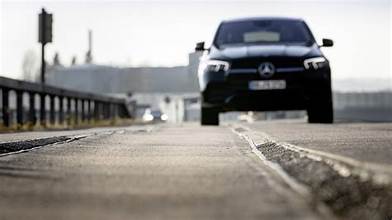
In 1926, the companies of Benz & Cie and Daimler-Motoren-Gesellschaft (DMG) merged to form Mercedes-Benz, adopting the name of DMG’s car brand “Mercedes” (named after the daughter of Emil Jellinek, a key Daimler investor) and combining it with the legacy of Karl Benz. This merger laid the foundation for a brand that would become synonymous with quality, luxury, and technological innovation.
2. Engineering Excellence: The Hallmark of Mercedes-Benz.
2. Engineering Excellence: The Hallmark of Mercedes-Benz Mercedes-Benz’s reputation has been built on meticulous engineering and a relentless pursuit of perfection. Over the decades, the brand has introduced numerous engineering innovations that have set industry benchmarks.
- Engine Development: Mercedes has consistently pushed the boundaries of internal combustion engine technology. From the supercharged engines of the 1920s to the modern-day AMG performance engines, Mercedes-Benz has prioritized power, efficiency, and refinement.
- Suspension Systems: The brand introduced advanced suspension technologies like the independent suspension system in the 1930s and the revolutionary AIRMATIC air suspension, which offers a smoother ride and improved handling.
- Transmission Innovations: Mercedes-Benz played a leading role in developing automatic transmission systems, including the 9G-TRONIC nine-speed automatic transmission, known for its seamless gear shifts and fuel efficiency.
3. Safety First: Pioneering Automotive Safety.
3. Safety First: Pioneering Automotive Safety Mercedes-Benz has long been a pioneer in automotive safety. The company has introduced numerous safety technologies that are now standard across the industry:
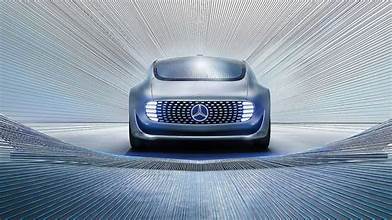
- Crumple Zones: In 1959, Mercedes-Benz engineer Béla Barényi developed the concept of crumple zones, which absorb energy during a crash to protect occupants. This innovation revolutionized automotive safety.
- Anti-lock Braking System (ABS): In 1978, Mercedes-Benz, in collaboration with Bosch, introduced ABS, preventing wheels from locking up during braking and improving vehicle control.
- Airbags: Mercedes-Benz was among the first manufacturers to include driver and passenger airbags as standard features, significantly enhancing occupant safety in collisions.
- PRE-SAFE System: This anticipatory safety system, introduced in 2002, prepares the vehicle and occupants for an impending collision by tightening seatbelts, adjusting headrests, and closing windows and sunroofs.
4. Luxury and Design: The Art of Automotive Aesthetic.
4. Luxury and Design: The Art of Automotive Aesthetics Mercedes-Benz vehicles are renowned not only for their performance and safety but also for their luxury and design. The company has consistently set standards in automotive aesthetics:
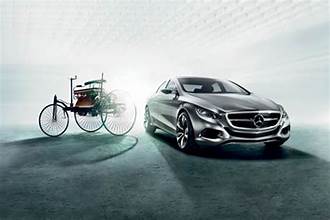
- Interior Craftsmanship: Mercedes interiors are characterized by high-quality materials, ergonomic design, and cutting-edge infotainment systems, blending comfort with technology.
- Exterior Styling: With a balance of elegance and athleticism, Mercedes-Benz designs are both timeless and forward-looking. The iconic grille and tri-star emblem symbolize prestige and engineering prowess.
- Maybach Line: Reintroduced as a sub-brand, Mercedes-Maybach represents the epitome of ultra-luxury, with handcrafted interiors and bespoke customization options.
5. Motorsport and Performance: A Tradition of Excellence Mercedes-Benz has a storied history in motorsport, particularly in Formula One and endurance racing. Motorsport has served as both a proving ground and a showcase for the brand’s technological prowess:
- Silver Arrows: The legendary Silver Arrows of the 1930s and post-war era dominated Grand Prix racing with their innovative designs and engineering.
- Formula One: Mercedes-AMG Petronas Formula One Team has been a dominant force in recent years, securing multiple Constructors’ and Drivers’ Championships, largely due to innovations in hybrid powertrains and aerodynamic efficiency.
- AMG Division: AMG, originally an independent tuning company, became part of Mercedes-Benz and transformed into a performance sub-brand, producing high-performance variants of standard Mercedes models.
6. Sustainability and Electric Future: Visionary Leadership.
6. Sustainability and Electric Future: Visionary Leadership In response to global environmental challenges, Mercedes-Benz has committed to sustainability and the transition to electric mobility:
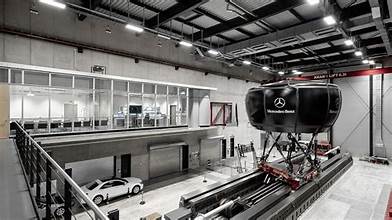
- EQ Brand: The launch of the EQ brand marks Mercedes-Benz’s entry into the electric vehicle (EV) market. Models like the EQC, EQS, and EQA offer premium electric mobility with advanced battery technology and digital features.
- Ambition 2039: Mercedes-Benz aims to achieve a carbon-neutral new car fleet by 2039. This includes investment in sustainable manufacturing, renewable energy, and circular economy practices.
- Recyclable Materials: The company has also emphasized the use of sustainable and recyclable materials in vehicle production, contributing to a greener automotive lifecycle.
7. Digitalization and Autonomous Driving Mercedes-Benz is at the forefront of digital transformation in the automotive industry, integrating cutting-edge technology into their vehicles:
- MBUX (Mercedes-Benz User Experience): Introduced in 2018, MBUX is an advanced infotainment system featuring voice control, AI-based learning, and a high-resolution touchscreen interface.
- Autonomous Driving: Mercedes-Benz has developed several autonomous driving technologies, including Drive Pilot, which enables Level 3 autonomous driving under certain conditions, making it the first automaker to gain approval for this level of autonomy in Germany.
- Over-the-Air Updates: The brand has embraced software-driven vehicle architecture, allowing for continuous updates and improvements post-purchase.
8. Global Presence and Cultural Impact.
8. Global Presence and Cultural Impact Mercedes-Benz is not just a car manufacturer; it is a cultural icon with a global presence:
- Global Manufacturing: With production facilities in over 30 countries, Mercedes-Benz ensures localized production and global reach.
- Pop Culture and Status Symbol: Featured in films, music, and fashion, Mercedes-Benz has become a symbol of status and aspiration worldwide.
- Corporate Social Responsibility: Mercedes-Benz is involved in numerous philanthropic initiatives, from educational programs to environmental conservation efforts.
Conclusion The legacy of Mercedes-Benz is one of unwavering commitment to innovation, luxury, and responsibility. From the invention of the first car to the latest advancements in electric and autonomous vehicles, Mercedes-Benz has consistently pushed the boundaries of what is possible in the automotive world. As the industry faces new challenges and opportunities, Mercedes-Benz continues to lead with visionary thinking, technological prowess, and an unyielding dedication to excellence. It is not just a car brand—it is a symbol of innovation-driven legacy that will continue to shape the future of mobility.
1. Who were the founders of the technologies that led to the formation of Mercedes-Benz?
Answer: Karl Benz and Gottlieb Daimler were the pioneers who developed the first gasoline-powered automobiles independently in the late 19th century. Their companies merged in 1926 to form Mercedes-Benz.
2. What was the significance of the Benz Patent-Motorwagen?
Answer: The Benz Patent-Motorwagen, created by Karl Benz in 1886, is widely regarded as the first true automobile powered by a gasoline engine.
3. What are some major engineering innovations introduced by Mercedes-Benz?
Answer: Mercedes-Benz has introduced supercharged engines, independent suspension systems, AIRMATIC air suspension, and the 9G-TRONIC automatic transmission.
4. How has Mercedes-Benz contributed to automotive safety?
Answer: Mercedes pioneered crumple zones (1959), introduced ABS with Bosch (1978), standardized airbags, and developed the PRE-SAFE system in 2002 to prepare the vehicle and passengers for imminent collisions.
5. What is the PRE-SAFE system?
Answer: PRE-SAFE is an anticipatory safety system that tightens seatbelts, adjusts headrests, and closes windows in preparation for an impending crash.
6. What is unique about the design philosophy of Mercedes-Benz?
Answer: Mercedes-Benz combines luxury with functionality, focusing on high-quality interiors, timeless exterior styling, and premium customization, especially in the Maybach sub-brand.
7. What is the significance of the Silver Arrows?
Answer: The Silver Arrows were a series of dominant racing cars from the 1930s and beyond that showcased Mercedes-Benz’s innovation in motorsport engineering.
8. How has Mercedes-Benz impacted Formula One racing?
Answer: The Mercedes-AMG Petronas F1 Team has achieved multiple world championships through innovations in hybrid powertrains and aerodynamics.
9. What is the Mercedes-Benz EQ brand?
Answer: EQ is the electric vehicle sub-brand of Mercedes-Benz, with models like the EQC, EQS, and EQA leading the company’s push toward sustainable mobility.
10. What are the goals of Mercedes-Benz’s “Ambition 2039” plan?
Answer: The plan aims to achieve a carbon-neutral new car fleet by 2039 through sustainable manufacturing, use of renewable energy, and incorporating recyclable materials.
11. What does MBUX stand for and what does it do?
Answer: MBUX stands for Mercedes-Benz User Experience. It is an AI-powered infotainment system featuring voice control, touchscreens, and personalized learning capabilities.
12. What level of autonomous driving has Mercedes-Benz achieved, and where is it approved?
Answer: Mercedes-Benz has achieved Level 3 autonomous driving with its Drive Pilot system, which is approved for use in Germany.
13. How does Mercedes-Benz maintain global production capabilities?
Answer: Mercedes-Benz operates manufacturing facilities in over 30 countries, enabling localized production to meet global demand.
14. In what ways has Mercedes-Benz influenced global culture?
Answer: The brand is featured in pop culture, music, and fashion, serving as a symbol of status and aspiration around the world.
15. What is the legacy of Mercedes-Benz in the automotive world?
Answer: Mercedes-Benz is known for its innovation, engineering excellence, safety leadership, and commitment to sustainability, shaping the future of mobility while preserving its heritage.

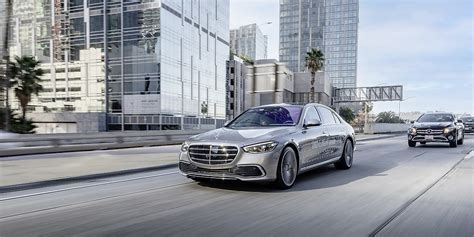
Pingback: Family Road Trip Through Scotland - Deep Learn Daily
I’ll definitely bookmark this page.